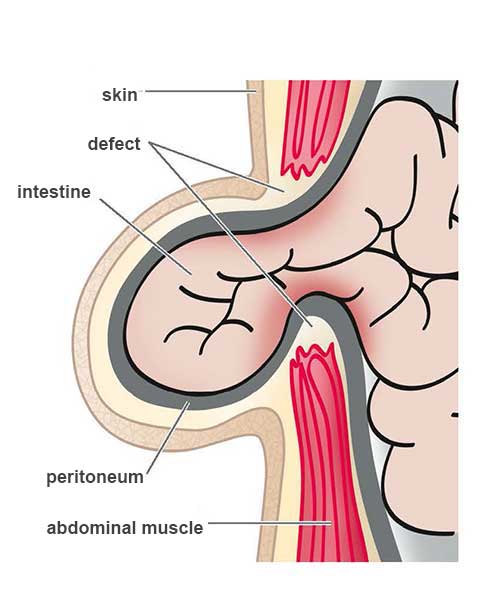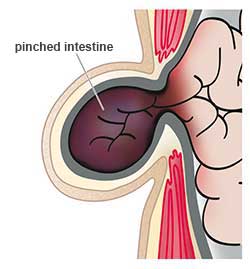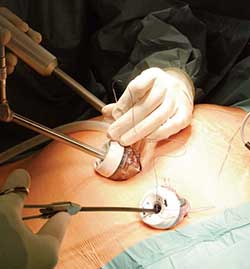What are hernias?
A hernia (from the Latin for rupture) is the protrusion of internal organs out of the abdominal cavity through a hole in the supportive layers of the abdominal wall. It can be congenital (connective tissue weakness) or be acquired at any point in a person’s life. Heavy physical work, increased pressure in the abdominal cavity, chronic coughing or bearing down hard due to chronic constipation can encourage the formation of a hernia. With small hernias patients often notice only a pulling pain at first, particularly when carrying a weight. Over time, a visible swelling develops that feels like a bulge under the skin. This protrusion (the hernia sac) develops when parts of the bowels penetrate through the muscle layers that surround the abdominal wall on all sides.
Even though about three of four hernias are found in the groin, they are not restricted to this region. The umbilical hernia is the second-most common hernia of the abdominal wall. The navel and the underlying hernia sac bulges outwards.
After abdominal surgery that involves opening of the abdominal wall, the scar that is formed is a weak point in the muscle layer. An incisional hernia is a common complication after such procedures and occurs in about 1 in 10 patients. The hernia leads to a bulging of the tissue.




